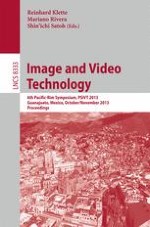This book constitutes the thoroughly refereed post-conference proceedings of the 6th Pacific Rim Symposium on Image and Video Technology, PSIVT 2013, held in Guanajuato, México in October/November 2013. The total of 43 revised papers was carefully reviewed and selected from 90 submissions. The papers are organized in topical sections on image/video processing and analysis, image/video retrieval and scene understanding, applications of image and video technology, biomedical image processing and analysis, biometrics and image forensics, computational photography and arts, computer and robot vision, pattern recognition and video surveillance.
